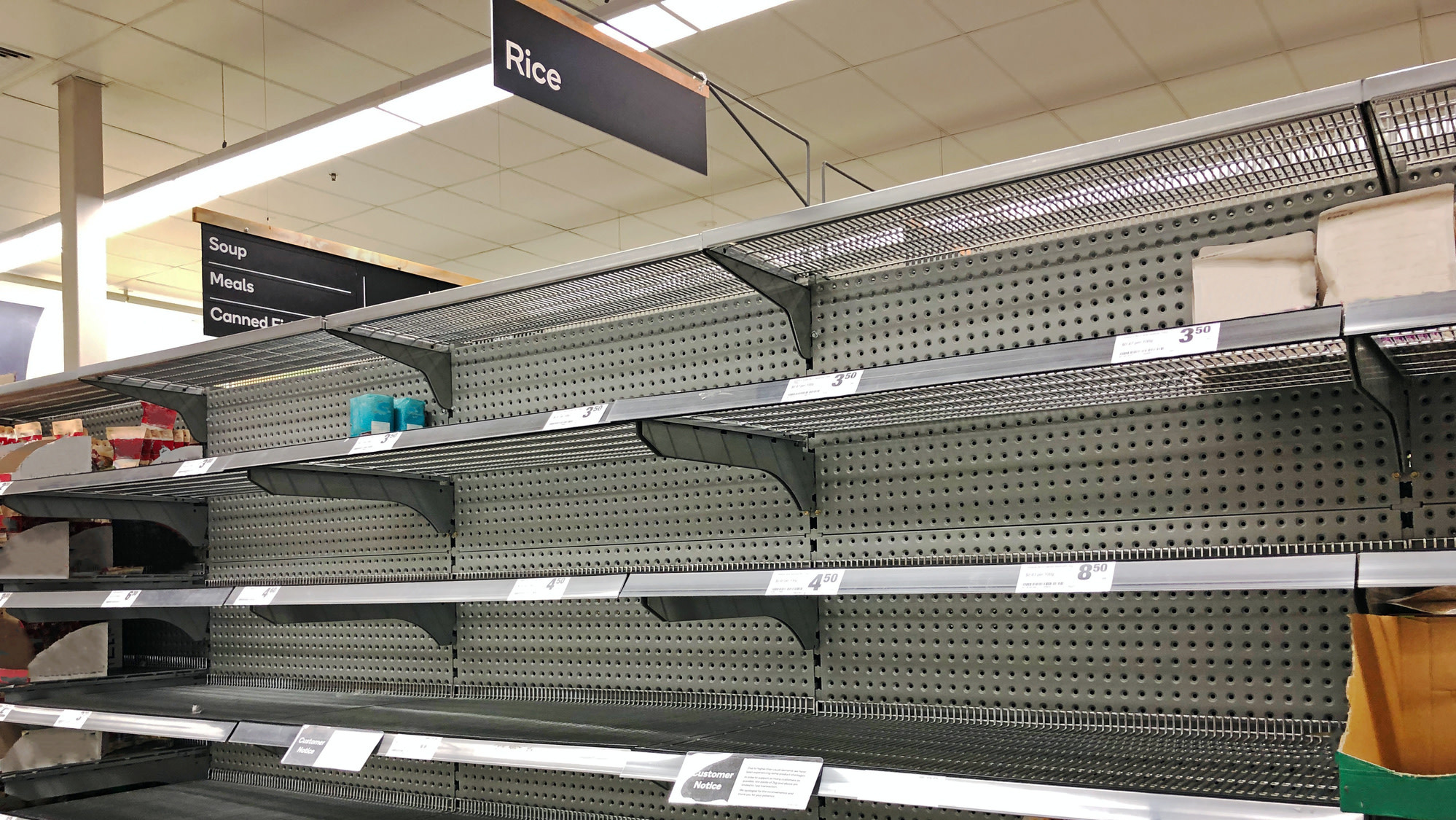The Early COVID Grocery Shortages Explained, Finally
Remember the good old days of March and April when every week, there was a different empty section of the grocery store? No flour, no yeast, no pasta, no hand sanitizer, no toilet paper. Remember how we panicked? (I personally remember scoring an ounce of yeast from a local bakery and feeling like a seasoned black marketeer.) Now it turns out, according to this story in Slate, that there wasn't a lack of flour, yeast, pasta, etc. after all. Instead, all the shortages were due to a lack of packaging. Because when you buy five pounds of flour, you don't just buy five pounds of flour. You also buy the paper sack the flour comes in.
"It turns out that packaging presents some unique challenges," writes reporter Aaron Mak. "This isn't primarily because of the materials, like aluminum or paper. Instead, it's about factories' limited capacity to turn those materials into the specific kinds of containers consumers require."
Factories are not small and nimble operations, able to change direction on a moment's notice. They need time to adjust the production line to switch from making, say, kegs to cans. Each machine is in a specific place and serves a specific purpose. To make changes requires either buying new equipment or retrofitting the old equipment, which is equally expensive. Or building new factories to accommodate the new demands, which is the most expensive and time-consuming of all.
There's also the question of obtaining raw material.
Beer is another good example. Since Americans have been forced to do more of their drinking at home rather than at bars, demand for kegs has plummeted while demand for retail containers has skyrocketed. In the spring, that translated into a shortage of aluminum cans, which saw a nearly 30 percent rise in demand from March to early May. (Just a 5 percent swing can be significant enough to disrupt the beer industry's supply chains.) Even now, some aluminum suppliers are reporting the lowest inventory levels they've ever had, with increased consumer demand for soft drinks, hard seltzers, and canned foods also exacerbating the shortage.
It's even worse for factories that only manufacture parts of things, like, say, pumps instead of bottles, and rely on other factories to provide those missing components, especially if those factories are overseas. It's a puzzle that manufacturers have been scrambling to solve. And this article is a fascinating look into an aspect of food production that most of us don't ever think about.
